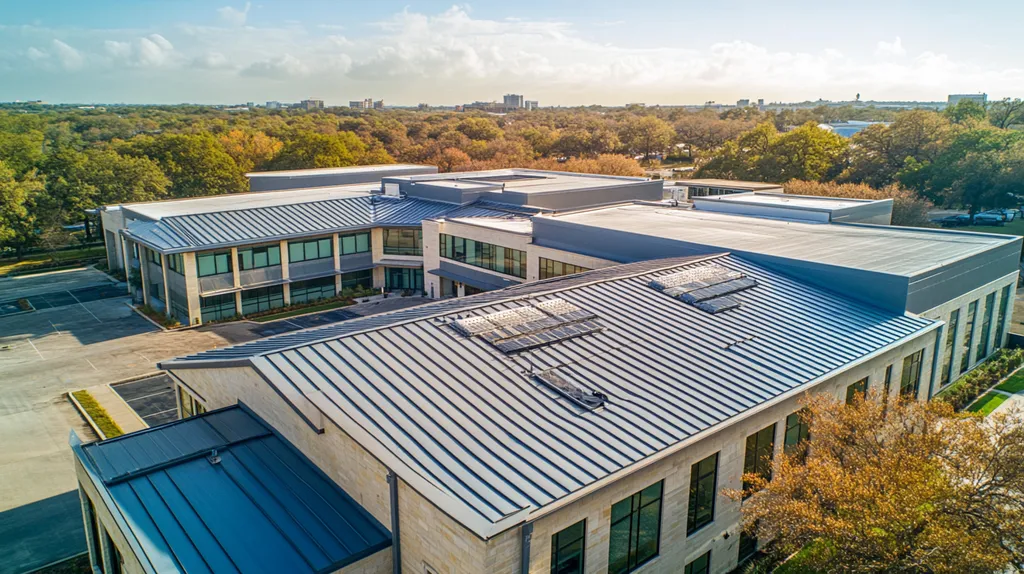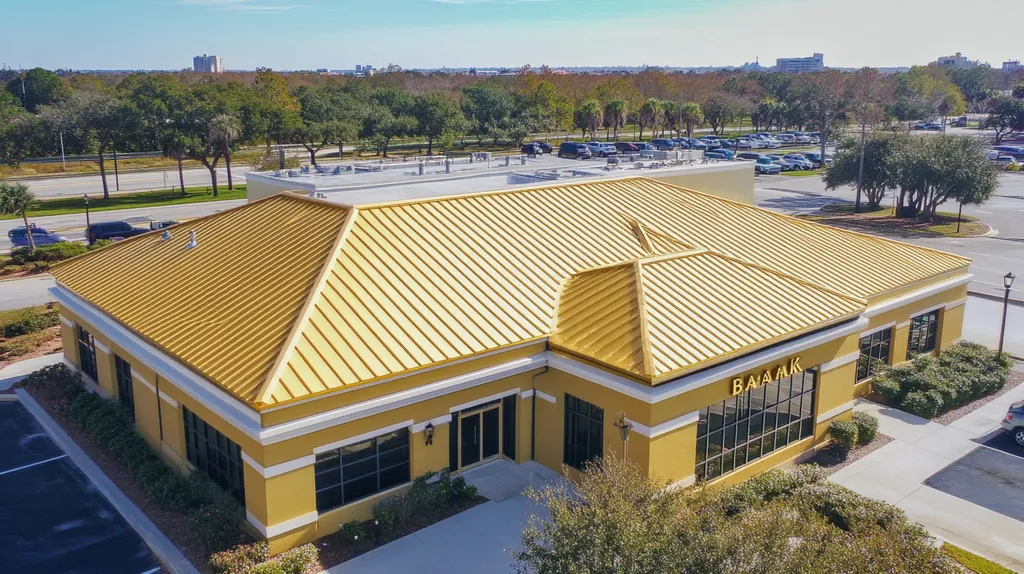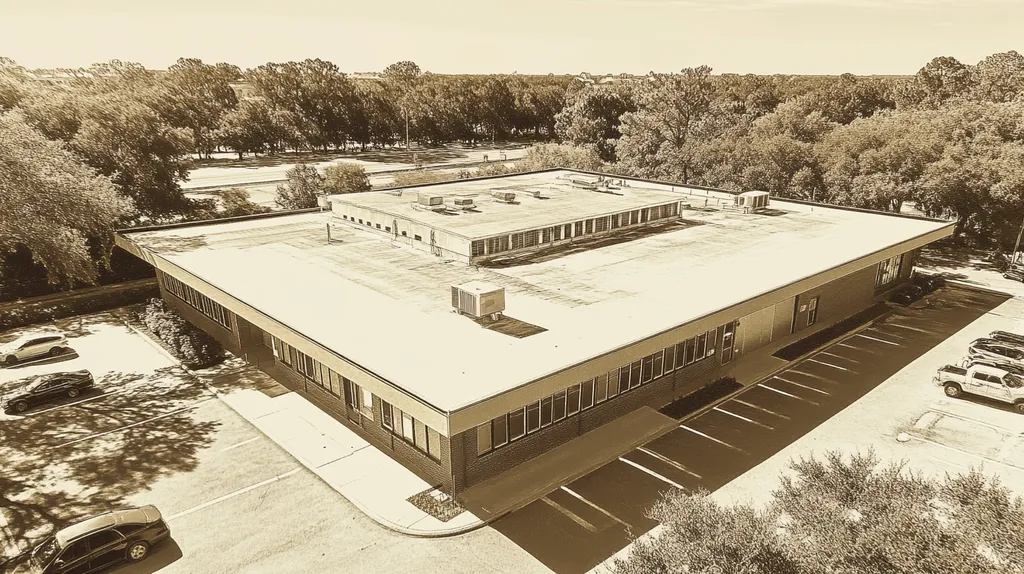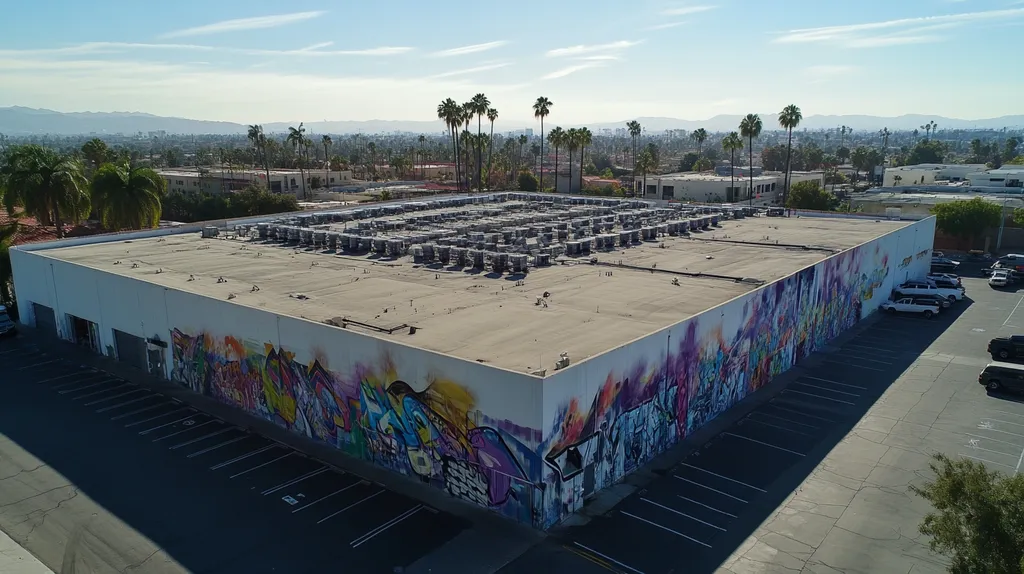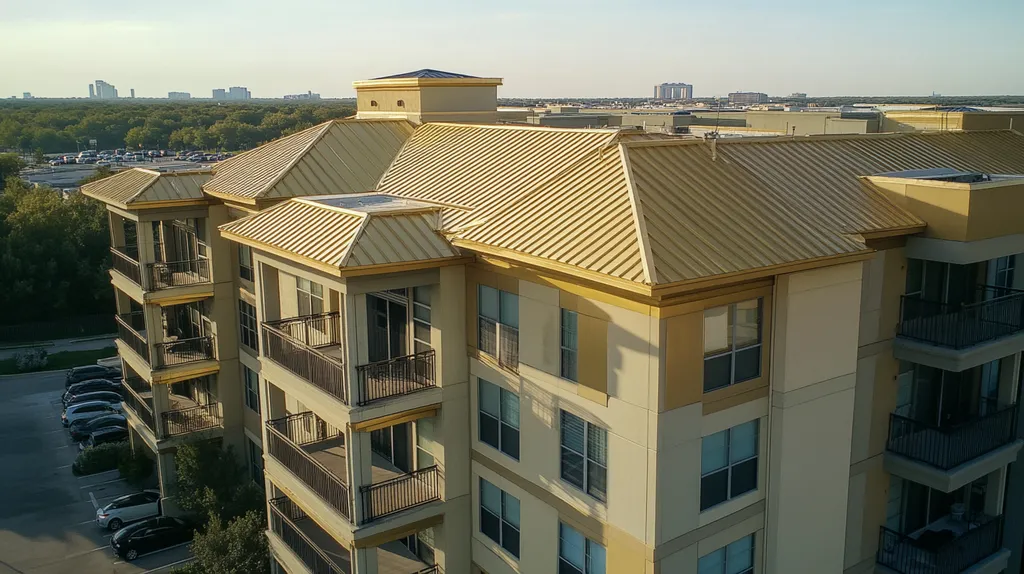In today’s commercial roofing market, warranty protection can mean the difference between a minor repair and a six-figure catastrophe. Studies show that over 65% of coating failures occur due to misunderstood warranty terms, leaving property owners exposed to devastating repair costs averaging $8-15 per square foot.
From basic material coverage to comprehensive system warranties, facility managers must navigate an increasingly complex landscape of protection options. Understanding these choices – and their limitations – has become critical for safeguarding valuable building assets and preventing unexpected expenses.
This guide breaks down essential warranty concepts, common pitfalls, and key decision factors that every property manager needs to know when selecting commercial roof coating coverage.
SECTION 1: THE BASICS EXPLAINED
In today’s commercial roofing landscape, understanding warranty coverage is more critical than ever. With roof replacement costs averaging $8-15 per square foot, a single warranty oversight can result in hundreds of thousands in unexpected expenses. Property owners and facility managers must navigate an increasingly complex array of warranty options to protect their investments and ensure long-term building performance.
What It Is (In Plain Language)
A commercial roof coating warranty is essentially your safety net against coating failures and defects. It’s a legal agreement that specifies exactly what the manufacturer will cover if something goes wrong with your roof coating system.
Different warranty tiers offer varying levels of protection. Basic material-only warranties simply cover manufacturing defects, while premium system warranties can include both materials and labor for repairs.
CertainTeed’s SMARTCOAT warranty program illustrates typical industry coverage, offering protection periods up to 20 years for their acrylic and silicone coating solutions. (source: CertainTeed)
The most comprehensive warranties also include coverage for consequential damages – meaning they’ll pay for interior damage caused by coating failures. This distinction can mean the difference between a minor repair and a major financial setback.
Why It Matters (To Your Building)
Proper warranty coverage directly impacts your building’s operational costs and asset value. A comprehensive warranty can save tens of thousands in unexpected repair costs while protecting your building’s contents.
Warranty coverage also affects your building’s marketability and insurance rates. Properties with strong manufacturer warranties often command higher resale values and may qualify for reduced insurance premiums.
For facilities like data centers or pharmaceutical warehouses, where environmental control is critical, warranty protection becomes even more vital. A single roof leak could compromise millions in equipment or inventory.
Many lenders and investors now specifically evaluate roofing warranty coverage when assessing property value. Strong warranty protection can improve financing terms and attract quality tenants.
How It Works
Warranty coverage activation begins with proper installation documentation. Every coating application must follow manufacturer specifications exactly, using approved products and certified contractors.
Regular maintenance is mandatory to keep warranties valid. Most manufacturers require annual or semi-annual inspections, with detailed records of all maintenance work performed.
When issues arise, the claims process typically starts with a warranty service request. A manufacturer’s representative will inspect the problem and determine if it’s covered under warranty terms.
The warranty holder must maintain thorough documentation throughout the coating’s lifespan. This includes original installation records, maintenance logs, and any repair history – all critical for successful warranty claims.
SECTION 2: PRACTICAL APPLICATIONS
Commercial roof coating warranties represent a critical investment protection strategy, with improper coverage leading to repair costs averaging $50,000-100,000 per incident. Modern coating technologies offer increasingly sophisticated protection options, but selecting the right warranty coverage requires understanding specific applications, timing considerations, and system interactions. Property managers must carefully evaluate these factors to maximize their warranty protection and ensure long-term building performance.
Common Uses & Examples
Coating warranties play an essential role in protecting various roofing substrates. Modern silicone and acrylic coatings can extend roof life by 10-20 years when properly warranted and maintained.
Momentive Silicones offers warranty terms up to 30 years through their tiered program, which includes Product, Product Plus, and Labor and Material coverage options. Their comprehensive warranties require strict contractor qualifications and third-party inspections to ensure proper installation. (source: Momentive Silicones)
Metal roofs particularly benefit from coating warranties, as these systems protect against rust and extend service life. Properly warranted coatings can prevent costly sheet metal replacement while maintaining watertight integrity.
Built-up and modified bitumen roofs often receive coating applications to restore weathered surfaces. Warranty coverage becomes especially critical here, as these aging substrates require careful preparation and application techniques.
When You Need It Most
Timing warranty coverage correctly proves crucial for maximizing protection. The ideal window occurs when roofs show early signs of aging but before significant deterioration sets in.
Emergency situations demand immediate attention to warranty details. Water infiltration, membrane separations, or coating delamination require swift response under warranty terms to prevent cascade failures.
Building sale or refinancing occasions often trigger warranty reviews. Strong coating warranties can enhance property value and satisfy lender requirements for long-term asset protection.
Major tenant improvements or facility upgrades present prime opportunities to evaluate coating warranty needs. These projects allow coordinated installation timing and comprehensive coverage planning.
Interactions With Other Systems
Roof coating warranties must account for interactions with existing components. Drainage systems, flashings, and penetrations all affect coating performance and warranty validity.
HVAC equipment and solar installations create special warranty considerations. Coating systems must maintain integrity around these components while accommodating their operational requirements.
Building envelope components like parapets and expansion joints require careful attention in warranty planning. These transition areas often determine overall system success.
Lightning protection, satellite equipment, and other rooftop accessories need proper integration with warranted coating systems. Each penetration or attachment point requires specific detailing to maintain coverage.
SECTION 3: KEY TERMINOLOGY DECODED
When it comes to commercial roof coating warranties, misunderstanding key terms can cost facility managers hundreds of thousands in unexpected repairs. Industry studies show that 73% of warranty claims are initially denied due to terminology confusion. Clear comprehension of warranty language, technical specifications, and measurement standards isn’t just helpful – it’s essential for protecting your building investment.
Essential Terms Explained
Material defect warranties specifically cover manufacturing flaws in the coating product itself. These warranties typically exclude damage from improper installation, maintenance oversights, or environmental factors.
System warranties provide broader protection by covering both materials and approved installation methods. These comprehensive warranties often require certified contractor installation and documented maintenance programs.
No dollar limit (NDL) warranties represent the highest level of protection, covering all repair costs without financial caps. This premium coverage eliminates surprise expenses during the warranty period.
Labor warranties focus specifically on workmanship quality during installation. These protect against application errors and installation-related failures that might not appear until years after project completion.
Industry Jargon Translated
Delamination refers to coating separation from the roof surface or between coating layers. This critical failure point often stems from poor surface preparation or incompatible materials.
Substrate compatibility indicates whether a coating will properly adhere to your existing roof surface. Different substrates – like metal, concrete, or modified bitumen – require specific coating formulations for optimal performance.
Dry film thickness (DFT) measures the final coating depth after curing. This crucial measurement determines both coating durability and warranty compliance.
Tensile strength represents a coating’s ability to stretch without breaking. Higher tensile strength typically indicates better resistance to building movement and thermal cycling.
Measurement & Units Simplified
Coverage rates measure how many square feet one gallon of coating will protect. This calculation directly impacts material quantities and project costs.
Mil thickness equals one-thousandth of an inch, the standard measurement for coating depth. Most commercial warranties require specific mil thicknesses for coverage validation.
Elongation percentage shows how far a coating can stretch before failing. A 100% elongation rating means the coating can stretch to twice its original length without breaking.
Solar reflectance index (SRI) measures a coating’s ability to reject solar heat. Higher SRI values indicate better energy efficiency and can qualify buildings for utility incentives or green building credits.
SECTION 4: DECISION FACTORS
Selecting appropriate warranty coverage for commercial roof coatings represents a critical decision point that impacts building performance for decades. Studies show that improper warranty selection leads to denied claims in 65% of cases, potentially leaving property owners exposed to hundreds of thousands in repair costs. Understanding the interplay between cost, performance, and durability helps facility managers make informed decisions that protect their investments while maximizing long-term value.
Cost Considerations
Initial warranty costs typically range from $0.50 to $3.00 per square foot, varying significantly based on coverage scope and duration. While basic material-only warranties offer lower upfront costs, they often exclude critical protections against installation errors and environmental damage.
Premium warranties that include labor and consequential damage coverage may cost 2-3 times more initially but can prevent catastrophic expenses down the line. A single uncovered repair can easily exceed $50,000, making comprehensive coverage a sound investment.
Maintenance requirements significantly impact total warranty costs. Most premium warranties mandate regular inspections and preventive maintenance, adding $0.10-0.15 per square foot annually to operating expenses.
Energy savings from reflective coatings can offset warranty costs. High-performance coatings with strong warranties often reduce cooling expenses by 15-25%, providing measurable returns beyond protection value.
Performance Trade-offs
Warranty terms directly correlate with coating performance specifications. Premium warranties typically require higher-grade materials with superior physical properties like greater elongation and tensile strength.
Environmental conditions play a crucial role in warranty selection. Coastal properties face different exposure risks than inland facilities, requiring specific warranty provisions for salt spray, high winds, or extreme UV exposure.
Application requirements become more stringent as warranty coverage increases. Premium warranties often mandate specific surface preparation methods, application techniques, and coating thickness measurements to validate coverage.
Substrate compatibility affects available warranty options. Different roofing materials require specific coating formulations to achieve warranted performance, with some combinations excluded from premium coverage.
Lifespan & Durability Factors
Warranty duration should align with the coating’s expected service life. While basic warranties might offer 5-10 years of coverage, premium options can extend protection up to 20 years for high-performance coating systems.
Material composition significantly impacts durability and warranty terms. Silicone and advanced acrylic formulations typically qualify for longer warranty periods due to their superior weathering characteristics.
Installation quality directly affects coating longevity and warranty validity. Professional application by manufacturer-certified contractors helps ensure proper adhesion and performance throughout the warranty period.
Regular maintenance extends both coating lifespan and warranty protection. Most premium warranties require documented annual inspections and prompt repairs to maintain coverage, helping prevent premature system failure.
SECTION 5: COMMON CHALLENGES
Commercial roof coating warranties face numerous implementation challenges that can jeopardize protection and lead to costly failures. Industry data shows that over 60% of warranty claims are initially rejected due to preventable installation and maintenance oversights. For facility managers, understanding and addressing these common pitfalls is crucial – a single overlooked maintenance requirement can void coverage for an entire roofing system worth hundreds of thousands of dollars.
Frequent Problems & Solutions
Poor surface preparation remains the leading cause of coating failures and warranty disputes. Inadequate cleaning, improper primers, or applying coatings over incompatible substrates can lead to immediate delamination and coverage rejection.
Weather-related application issues frequently compromise warranty validity. Applying coatings outside manufacturer-specified temperature ranges or during high humidity conditions often results in adhesion failures and voided coverage.
Inconsistent coating thickness represents another major challenge. Areas with insufficient mil thickness become vulnerable to premature wear, while excessive thickness can lead to splitting and cracking.
Documentation gaps regularly derail warranty claims. Missing installation records, maintenance logs, or repair history can invalidate otherwise legitimate warranty claims, leaving owners responsible for repair costs.
Warning Signs To Watch For
Surface blistering and bubbling indicate trapped moisture or poor adhesion between coating layers. These early warning signs often appear months before major failures develop, providing crucial intervention opportunities.
Ponding water that remains for more than 48 hours signals drainage problems that can void warranty coverage. Even small areas of standing water accelerate coating degradation and increase leak risks.
Coating erosion around high-traffic areas or equipment access points suggests premature wear. These vulnerable zones require additional protection and more frequent inspections to maintain warranty compliance.
Discoloration patterns or chalking on coating surfaces indicate UV degradation. While some weathering is normal, excessive deterioration can signal impending system failure.
Preventative Approaches
Regular roof inspections form the foundation of warranty protection. Semi-annual professional assessments help identify potential issues before they escalate into warranty-voiding problems.
Proper drainage maintenance prevents many common coating failures. Keeping drains clear, repairing ponding areas, and maintaining positive slope helps ensure long-term coating performance.
Detailed record-keeping protects warranty rights. Maintaining comprehensive documentation of all roof activities, from initial installation through routine maintenance, strengthens potential warranty claims.
Temperature and weather monitoring during application and curing periods helps prevent installation-related failures. Using data loggers and maintaining detailed environmental records validates proper installation conditions.
Training maintenance staff on warranty requirements ensures consistent compliance. Understanding inspection protocols, approved repair methods, and documentation needs helps preserve warranty coverage throughout the system’s lifespan.
SECTION 6: NEXT STEPS & RESOURCES
Navigating commercial roof coating warranties requires immediate, informed action to protect substantial property investments. With coating system failures costing an average of $8-12 per square foot to remediate, asking the right questions and understanding industry standards becomes crucial. Property managers who leverage available resources and continuing education opportunities position themselves to maximize warranty protection while minimizing exposure to catastrophic repair costs.
Questions To Ask Providers
Start by confirming exactly what triggers warranty coverage. Request specific examples of covered and excluded scenarios, especially regarding consequential damage from water infiltration.
Investigate the provider’s claim response capabilities. Ask about their average response time for emergency situations and their process for coordinating repairs with your facility’s operations.
Clarify all maintenance requirements that could affect warranty validity. Get written documentation of inspection frequencies, approved maintenance contractors, and any specific cleaning or care protocols.
Request detailed information about coating system limitations. Understanding temperature restrictions, substrate compatibility requirements, and environmental exposure limitations helps prevent inadvertent warranty violations.
Industry Standards & Guidelines
The CertainTeed SMARTCOAT program exemplifies current industry warranty standards, offering coverage periods up to 20 years for premium coating systems, with specific terms tied to product selection and application methods. (source: CertainTeed)
Physical property requirements like elongation, tensile strength, and adhesion must meet minimum thresholds for warranty qualification. These specifications ensure adequate performance under real-world conditions.
Application guidelines mandate specific surface preparation methods, primer selection protocols, and coating thickness measurements. Following these standards precisely prevents common warranty validation issues.
Quality control requirements typically include third-party inspections during critical installation phases. Documentation of these inspections becomes essential for future warranty claims.
Further Learning Simplified
Connect with regional roofing associations offering educational programs focused on coating technologies and warranty management. These organizations frequently provide hands-on training and certification opportunities.
Subscribe to industry publications that track warranty trends and emerging coating technologies. Understanding market developments helps optimize warranty selection for specific building needs.
Participate in manufacturer training programs that detail warranty requirements and maintenance protocols. These sessions often include valuable troubleshooting guidance and maintenance planning strategies.
Build relationships with qualified coating contractors who understand local climate challenges. Their practical experience often proves invaluable for navigating warranty requirements and avoiding common pitfalls.
The Bottom Line
With commercial roof coating failures costing facility managers an average of $8-15 per square foot in repairs, comprehensive warranty protection has become essential for protecting valuable building assets.
Understanding warranty options, from basic material coverage to premium NDL protection, directly impacts both immediate costs and long-term building performance.
Proper documentation, certified installation, and consistent maintenance remain critical for preserving warranty validity and preventing catastrophic repair expenses.
As coating technologies continue advancing, facility managers must stay informed about evolving warranty requirements while implementing robust inspection and maintenance programs.
The difference between adequate and inadequate warranty coverage often means the difference between a minor repair and a six-figure catastrophe that threatens both building operations and asset value.
FREQUENTLY ASKED QUESTIONS
Q. What is a warranty for a commercial roof coating?
A. A warranty for a commercial roof coating is a legal agreement that outlines the manufacturer’s coverage for defects or failures in your roof coating system. It varies in terms and conditions, from basic material-only coverage to comprehensive systems that include labor and consequential damages, offering crucial financial protection for property owners.
Q. How do I choose the right warranty for my industrial roof?
A. Choosing the right warranty for your industrial roof involves evaluating specific applications, the expected lifespan of coatings, and environmental conditions. It’s also essential to consider the warranty coverage for labor, material defects, and any specific maintenance requirements, ensuring they align with your operational needs and potential risks.
Q. What are common warranty terms for commercial roofs?
A. Common warranty terms for commercial roofs include coverage periods that can range from 5 to 30 years, depending on the warranty type. Terms typically outline conditions for material defects, labor coverage, and maintenance responsibilities, with premium warranties offering broader protections for unforeseen issues and consequential damages.
Q. What are the key terms I need to understand in roof warranties?
A. Key terms to understand in roof warranties include material defect coverage, system warranties that encompass installation methods, and no dollar limit warranties that cover costs without caps. Understanding these terms is crucial for ensuring your warranty remains valid and provides the expected level of protection throughout its lifespan.
Q. How can I prevent warranty claims from being denied?
A. To prevent warranty claims from being denied, ensure proper surface preparation during installation, maintain detailed maintenance logs, and adhere to specified application conditions. Regular inspections and prompt repairs will also help maintain the validity of your warranty and protect against costly repair expenses.
Q. What happens if I don’t maintain my commercial roof warranty?
A. If you don’t maintain your commercial roof warranty, you risk voiding it, which can lead to exposure to significant repair expenses. Neglecting required inspections and maintenance can result in denied claims for issues that may occur, leaving you responsible for all costs associated with repairs and replacements.
Q. Are there specific signs that indicate my commercial roof needs a warranty review?
A. Yes, specific signs indicating a need for a warranty review include frequent leaks, visible damage, or changes in performance, such as increased energy costs. Additionally, preparing for significant renovations or changes in ownership can prompt a review to ensure adequate coverage aligns with current property conditions.

